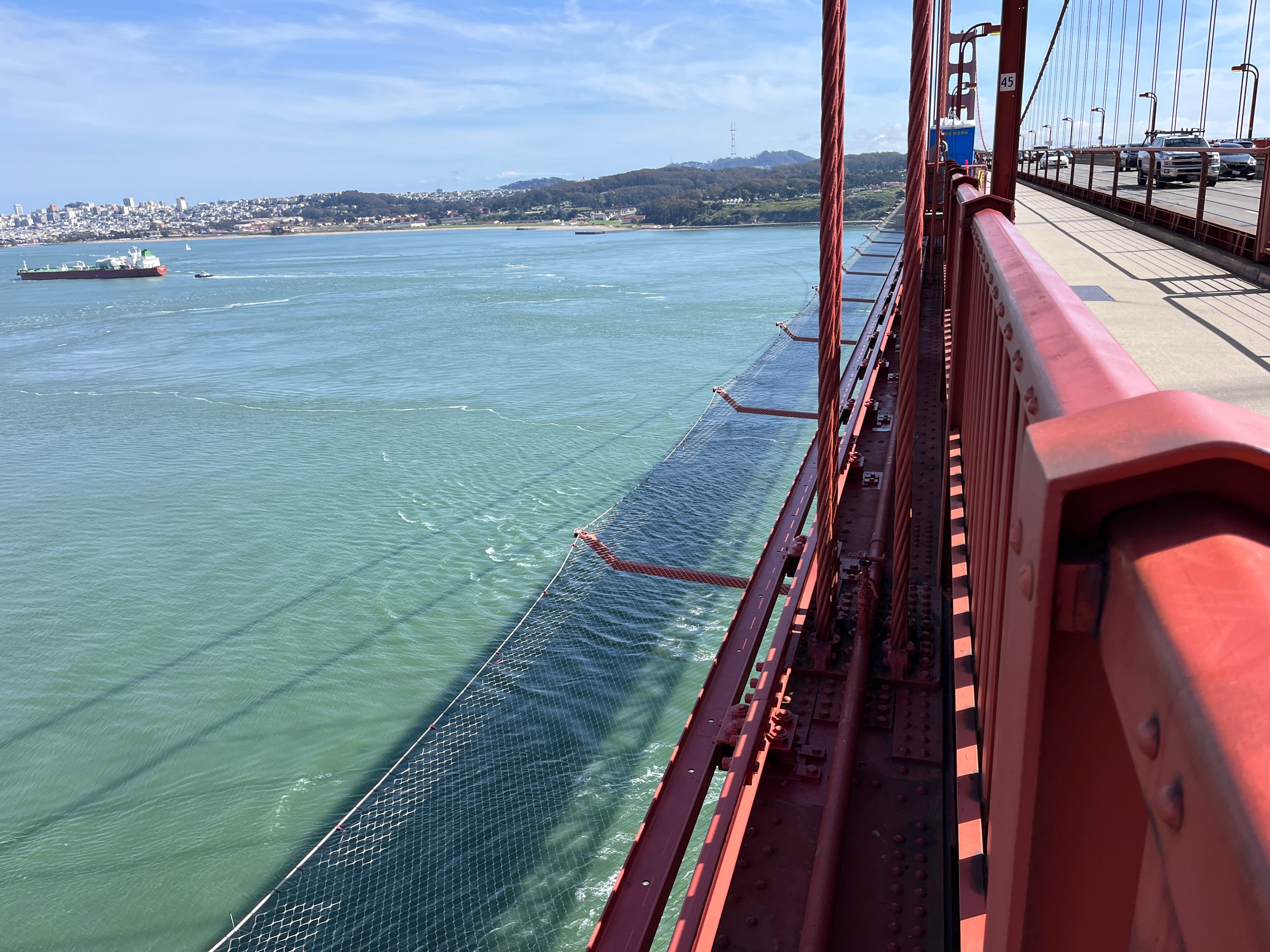It appears that the new suicide prevention barrier on the Golden Gate Bridge is having a significant effect—even though it’s not completed yet.
There have been five confirmed suicide jumps from the bridge this year through June, compared with 22 from all of last year, according to statistics released in July by the Bridge Rail Foundation, a nonprofit advocacy group that has campaigned for a barrier on the Golden Gate Bridge since 2006. Between 2000 and 2019, the bridge averaged between 30 and 40 suicides per year.
“It’s been a long, hard haul, and I’m delighted that the net is going forward and that suicides have decreased,” said Bridge Rail Foundation co-founder David Hull.
“It’s reasonable that the numbers would go down because you have less area where someone might be able to attempt a jump, but it’s not complete yet,” Paul Muller, another Bridge Rail co-founder, told The Standard Monday. “We’re hoping it gets to zero and stays at zero, but we’ll see.”
Construction on the suicide prevention barrier—a horizontal net of steel cables that runs 20 feet below the walkways on both sides of the bridge—began in 2017 and is expected to be finished by the end of this year.
The net is now over 75% complete, and the project cost to date is about $217 million (the cost originally was projected to be around $76 million), according to the Golden Gate Bridge, Highway and Transportation District.
Two-thirds of the money for the project are federal funds administered by the California Department of Transportation and the Metropolitan Transportation Commission, and one-third is a combination of bridge toll money and funds from the Mental Health Services Act (California’s Proposition 63, passed by voters in 2004), according to Denis Mulligan, general manager of the district.
The net, made of stainless steel, is designed not for a cushy landing but rather to inflict a painful, though nonlethal, injury on a jumper. While one function of the net is hindering anyone who does land on it from taking further action, the overriding aim is to deter people from jumping in the first place, said Mulligan.
“Suicidal people don’t want to hurt themselves—they want to die,” he said.
Why the barrier seems to be deterring some people despite being unfinished—there are wide sections of the railing with a direct line to the ocean—isn’t entirely clear. Some speculate that areas of the bridge without a net may be easier for police and the district bridge patrol to keep an eye on and that some would-be jumpers who see the net may assume it goes completely across.
Kevin Hines, a motivational speaker and nationally recognized figure in the suicide prevention movement who survived a jump from the Golden Gate Bridge in 2000, had another possible explanation: that suicide barriers, even unfinished ones, are not just physical impediments but symbols that communicate a powerful message.
“All around the world, where they have put barriers—on bridges, buildings, tall structures and railways—suicides have dropped. And in the metropolitan counties where they’re located (overall suicides) have dropped as well because you’ve shown people that you care,” Hines said.
Advocates for the bridge net say the widely held notion that such barriers don’t ultimately reduce suicide because the affected population will simply carry out their will elsewhere is a long-disproven misconception.
For example, a 1978 University of California Berkeley study of 515 people who were stopped from jumping off the Golden Gate Bridge (historically, police, bridge patrollers and passersby who intervene have been the main barrier) found that, 25 years later, only 6% had subsequently taken their own lives.
“It’s been demonstrated over and over again in suicide research that usually when people decide to kill themselves, they have a plan, place and time,” Hull said. “And if that is denied them for some reason, they don’t typically find a different plan and complete a suicide.
“We’re programmed to live,” he added. “And if we can get past that moment, life will reassert itself.”
Though the mystique and beauty of the Golden Gate Bridge are allegedly part of what draws so many despondent people to its heights, Hines said a more practical factor is also at play: simplicity.
“I was a jumper, and I was afraid of every other (suicide) method besides jumping, and I can’t really explain why,” he said. “And with the Golden Gate Bridge, I had ease of access to lethal means—just a 4-foot rail (to climb over) … People believe it’s a simple way to die. What they don’t realize is that it’s often a very violent and slow way to die—a horrible way to die.”
If you are having suicidal thoughts, call or text the Suicide and Crisis Lifeline at 998, or chat at 988lifeline.org.
